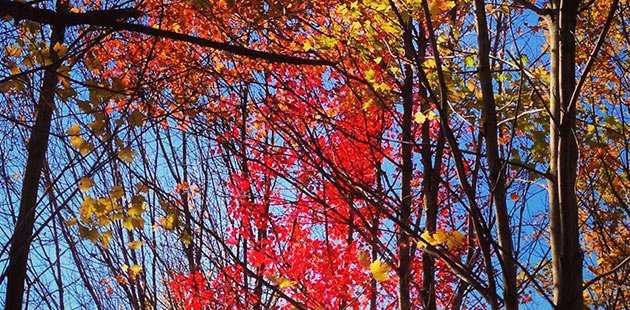 Autumn is one of the best times of year; apple picking, pumpkin pie making, and Halloween are a few of our favorite things about fall. But one of the most spectacular phenomena of this season, and arguably everyone’s favorite in New England, is the changing of the trees to reds, oranges, yellows and everything in between. Our inquisitive minds wanted to know why this happened and figured we’d share the answer with you. Enjoy!
Autumn is one of the best times of year; apple picking, pumpkin pie making, and Halloween are a few of our favorite things about fall. But one of the most spectacular phenomena of this season, and arguably everyone’s favorite in New England, is the changing of the trees to reds, oranges, yellows and everything in between. Our inquisitive minds wanted to know why this happened and figured we’d share the answer with you. Enjoy!
As summer winds down and autumn begins, the days get shorter, which signals to the trees that winter is coming. There is not enough light or water during winter for photosynthesis; so, starting in autumn, trees begin shutting down their chlorophyll-making abilities and start getting ready to rest for winter. As they shut down their chlorophyll production, the green hue of the chlorophyll is removed from their leaves and the yellow and orange colors begin to emerge. These colors were in the leaves throughout the year, but were being masked by the strong green color of chlorophyll.
But what about one of the most popular foliage colors, red? The red hues are made mostly in the fall, through the trapping of glucose in leaves of certain trees, such as the Maple. The glucose stuck inside the leaves, mixed with the sunlight and cool nights of autumn, cause the leaves to turn that gorgeous red color.
When we read about this scientific process, it makes perfect sense. Houseplants go through the same process when they don’t have enough water or sunlight – They can’t produce enough chlorophyll and their leaves first turn yellow, and then begin to shrivel and fall off.
Do you have any great photos of the foliage from this fall? Please share on our Facebook Page.


